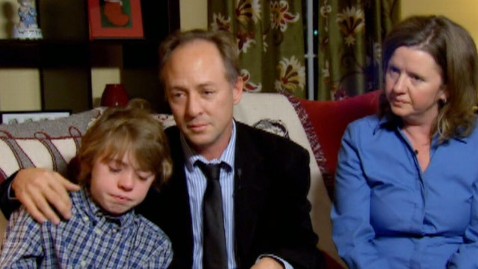WASHINGTON: Except in tragedy-hit Newtown, pupils returned to class around the United States on Monday, three days after an elementary school shooting massacre that triggered debate over school security.
Parents and teachers alike are intent now more than ever on making sure the "protective bubble" at schools is impenetrable to outside threats.
At Kensington Parkwood Elementary School just outside Washington, visitors must show credentials to enter the institution.
Just like any school day of the year, each student, each parent and each teacher -- even the principal -- must go through the main entrance's secured doors and check in with staff.
Unlike other institutions in the United States, where police and extra security guards have been deployed following the shooting that left 20 young children and six adults dead, the Kensington school is seeking a sense of normalcy.
"Today is a usual day," stressed school principal Barbara Liess. "Routine is one thing that's important for kids. That's how you build trust, that's how you build a sense of comfort."
Many parents have opted not to discuss the tragedy at Sandy Hook Elementary School in Newtown, Connecticut, whose child victims saw their innocent lives cut short at just six or seven years old.
"My six-year-old understands that things happen in life; people come, people go, things live, things die, people live, people die, but it's just something I don't think they need to be exposed to," said Kensington parent Dori Matalia.
The school will follow guidance from education officials in Maryland's Montgomery County to avoid addressing the subject in class, unless individual students want to discuss the matter with a psychologist made available to them.
As with their peers across the nation, Kensington Parkwood students started the school day by reciting the Pledge of Allegiance -- an expression of loyalty to the nation -- with their right hands on their hearts, then heard the principal on closed circuit television.
But this morning is not exactly like all the others. Liess chose to remind students that "doors need to keep closed all the time... need to stay locked" and that "nobody can enter the building without going through the office."
Like Liess, other school administrators sent notices over the weekend to assure parents they were "committed" to the safety of students and their families.
St. Peter School in Washington said it had "carefully thought-out safety policies and procedures" in place to respond to emergencies, designed to respond to a variety of emergencies.
"Though I pray we never have to use it for such a situation, our Code Red is a lock-down response intended to prepare the community for a crisis much like the one that occurred (Friday) in Connecticut," St. Peter officials wrote to parents.
Kensington Parkwood plans to go through a security drill toward the end of the week when the school will be in lockdown. The drills usually take place four times per year, along with others to protect against hurricane threats.
Children are told to hide in cubbies or under their desks, and to keep quiet to make the building seem empty.
"Of course, this is an example of how horrific things can happen. But in general, school is the safest place for kids to be," said Liess.
"It would be great if every kid would be surrounded by a protective bubble and nothing could ever happen to them, but it's not reality. But as much as possible, that's what we create here."
Daniel Domenech, executive director of the American Association of School Administrators, wondered how far a society like that in the United States, which cherishes its freedoms, could go.
"The school was doing everything right, the school was actually locked down," he said. "Even so, it's not enough to deter an individual that intends to break in the school while shooting... unless you turn schools into prisons with metal detectors.'
Domenech said the many shooting tragedies that have scarred the nation boil down to a "societal issue" about gun control and awareness of mental illness and potential violence.
- AFP/ck










